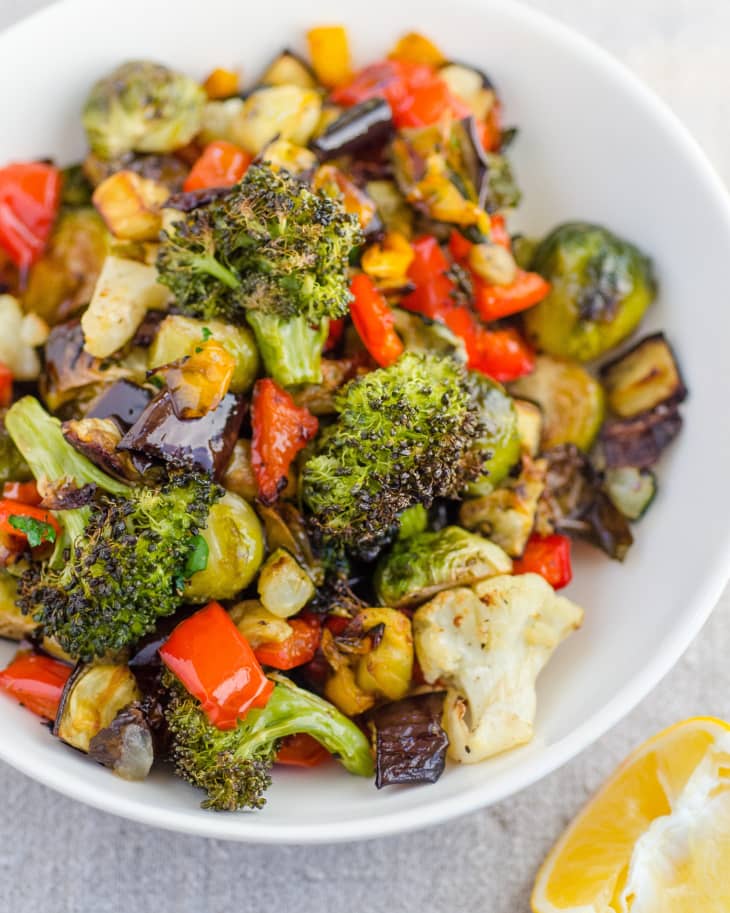The Best Oils for Roasting
Fat, specifically oil, is an essential component when roasting foods. Without it, you wouldn’t get that lovely crisp, brown caramelization that makes roasted veggies so amazing. There are so many different varieties, and the selection at stores only seems to be growing — so, which oil should you be using for roasting for both safety and flavor?
Understanding Smoke Points
From a safety standpoint, it’s important to understand the basics of an oil’s smoke point. If you haven’t heard of this term before, it’s just what it sounds like — the point at which oil starts to smoke and burn. If you’ve ever left a pan with oil over a hot burner for a minute too long, and found smoke wafting from the stovetop, you’ve seen this in action.
So why is smoke point important? There are several reasons. For one, when an oil is cooked beyond its smoke point, it can impart a burnt or bitter taste to food. Beyond that, when oil is cooked beyond its smoke point, the fats break down and some of the nutritional qualities of the fat are compromised.
The smoke points of fats and cooking oils vary widely, and are largely affected by refinement (or lack thereof). Refined fats and oils, like ghee, canola, and olive oil (labeled as virgin or light), have a higher smoke point than unrefined oils like extra-virgin olive oil.
For Fat and Flavor When Roasting, Choose Olive Oil or Ghee
For vegetables, chicken, and just about everything else, olive oil and ghee are our first choices for roasting at temperatures over 400°F. Not only do they help food cook up with the crispiness you crave, but each one also imparts its own unique flavor that you just don’t get from neutral oils like grapeseed or canola.
- Olive Oil: While the smoke point of olive oil (is a bit lower than our standard roasting temperature of 425°F, it’s still a solid choice (and a flavorful one at that) for roasting. This goes for both extra-virgin (the exact smoke point of this variety largely depends on quality, but averages around 425°F) and oil labeled as “virgin” or light olive oil, which is more refined and has a higher smoke point.
- Ghee: While not an oil, ghee, a type of clarified butter from which water and milk solids have been removed, is excellent for roasting. It has a relatively high smoke point (over 450°F), which makes it a good choice for high-heat cooking. It also imparts a faint buttery flavor to whatever you cook in it. Try it on your next roast chicken.
More About Ghee
Coconut Oil: Delicious, but Not for High-Heat Roasting
If flavor is what you’re after, I would be remiss not to mention coconut oil. It has a warm, nutty flavor and is wonderful for cooking. Coconut oil has a low smoke point of about 350°F, so to be safe I suggest using a lower oven temperature with this oil.
For a More Mild Flavor, Reach for a Neutral Oil
Don’t really care for the flavor of olive oil on your food? That’s okay. Instead, reach for a more mild, neutral cooking oil, like vegetable, canola, or grapeseed oil. It will coat foods the same way, helping them cook evenly and come out of the oven with dreamy caramelized edges, without imparting any extra flavor.
Save Expensive Oils for Drizzling and Dressing
Perhaps you’ve recently fallen head over heels for a bottle of expensive olive oil, avocado oil, or some fancy nut oil, and have been considering using it with your next batch of roasted veggies. Hold off.
The beauty of these oils is in their delicate flavor. Unfortunately, the more bold flavors of roasted food tend to overshadow those types of oils. Instead, save them for dipping your bread in, drizzling over soup, of blending together a vinaigrette. Or better yet, drizzle them over the food once it comes out of the oven.
